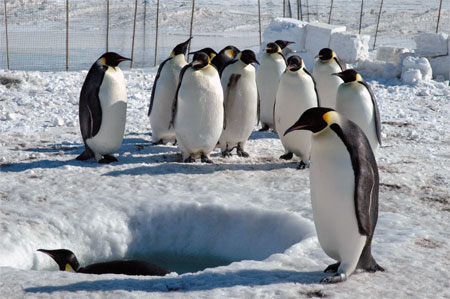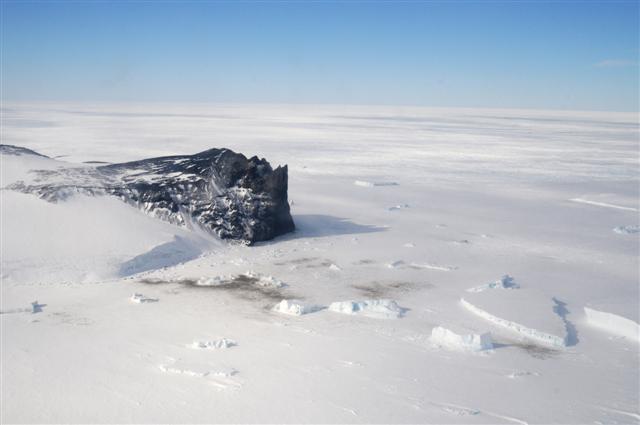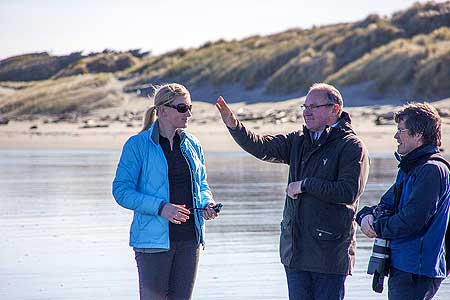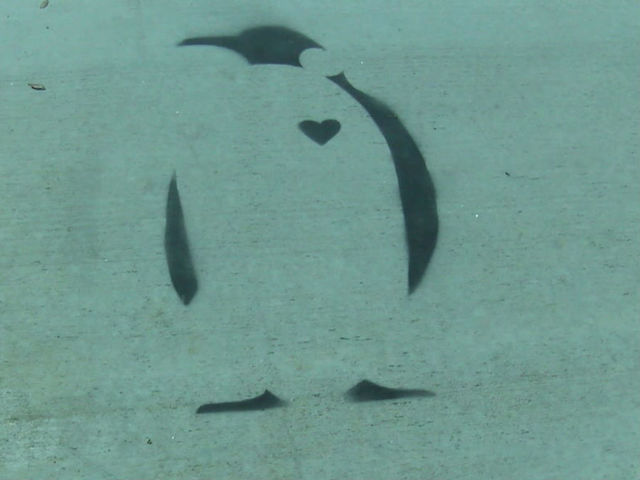
Photo Credit: Scripps
|
Scientist Gerald Kooyman has been studying emperor penguins for more than 40 years.
|
Gerald Kooyman discusses his research on Antarctica's iconic wildlife
By Peter Rejcek, Antarctic Sun Editor
Posted September 19, 2014
From making the first measurements of the diving depth of an emperor penguin in the 1960s to tracking colonies of
Aptenodytes forsteri with satellites,
Gerald Kooyman’s

long career studying the physiology and populations of marine
vertebrates has made him one of the world’s leading experts on
Antarctica’s iconic seabird.
A professor emeritus at the
University of California, San Diego’s
Scripps Institute of Oceanography 
,
Kooyman recently agreed to answer questions about his discoveries,
current research and the possible fate of the emperor penguin in a
rapidly changing world.

Photo Courtesy: Gerald Kooyman
Kooyman takes notes at a gentoo penguin colony in 1972.
1. You began your career in the Antarctic studying the diving
physiology of Weddell seals, I believe. What got you interested in
studying emperor penguins?
The first time I saw emps was early October of 1961, at Cape Royds,
when three came blasting through thin ice. They walked the 100 meters or
so from off shore and stood next to me in strong wind and bitter cold.
From that day forward, I wanted to learn more about the bird, and over
the years concurrent with the Weddell seal study, I did various short
experiments until 1986 when I got serious on a full time schedule of
working with emps.
2. You’ve been studying Antarctica’s iconic seabirds for more than
four decades now. What are some of the most important things that
you’ve learned about them?
The first determination of their diving depths to 265 meters in 1969;
it was the first such measurement for any bird, and it remained a
[depth] record by far until my 1986 study at Cape Washington.
The first remote camp site established on annual sea ice, which evolved into a series of studies that are still in progress.

The isolated dive hole protocol in use at Penguin Ranch.

Emperor penguins leap out of the water.

Emperor penguins swim under dive holes at Penguin Ranch.
The discovery of Cape Washington emp colony – known since 1964, but
with no idea that it was the second largest known colony, and it was an
ideal place for many of our studies including the foraging behavior of
the parents.
Application of the isolated dive hole protocol. First used for
Weddell seals, and the determination that it would work for emps, as
well for diving physiological studies, one of which was the
determination of their aerobic diving limit.
The breeding population structure of all Ross Sea emp colonies, and
that the chick fledging is an active process initiated by them, and they
initiate the fledging while their body [is] still covered by 60 percent
down.
Demonstration in 1998 that the Ross Sea colonies could be reached in
winter by [research vessel], and while there that we noted recent tracks
of birds coming and going to the water.
3. Emperors and other penguin species have been in the news
recently. Some of the reports seem to give conflicting news about the
status of the species’ overall health and their possible response to
climate change. Some of your own recent work
has suggested that emperor penguins are less loyal to their breeding
colonies than previously believed, meaning they may be able to adjust to
changing conditions if ice disappears. How do you see emperor penguins
faring in the coming decades as the Antarctic climate continues to
change, if current predictions hold true?
If the current trend continues then, like most of the planet, the
outlook is bleak for all emps, but especially those at the lower
latitudes. In those regions, sea ice decline will not only destabilize
breeding colonies, but also the pack-ice where the birds will molt in
the summer time. All individuals must molt, and the fast or pack-ice
that they choose must last for 36 days. Any time less and they lack the
water proofing to enter the minus 2 degrees Celsius water.
4. The study I referred to in the previous question had involved
using satellites to track the movements of the animals, and you’ve been
involved in other studies using remote sensing. How important do you
think remote sensing will be in the future for research and conservation
efforts?
Vital. There are places we cannot go for various reasons and the
imagery from satellites can provide much information. The response time
from request to acquiring an image is getting shorter, and the
resolution is better. This will continue to improve as more demand for
many tasks increases.

An aerial view of Cape Washington. The dark stains are actually emperor penguins.

Photo Credit: Rob Dunbar
Transmitters on the backs of emperor penguins. Research under Antarctic Conservation Act permit No. 2013-006.

Photo Credit: Gerald Kooyman
Kooyman's latest expedition took him and his team to remote and rough areas of the Antarctic.
5. Your most recent fieldwork took you to remote Antarctic seas in
2013 at the age of 78 to study emperor penguins during a period when,
as you said in your blog, “no one else has ever seen them: between
molting and returning to the colony.” What is the significance of this
research and what are you learning from the transmitters that you
deployed on the animals?
I am not sure what my age has to do with it, but haven’t you heard
that 70 is the new 40? When you stop exploring and learning, you are
“dead in the water.”
The time period just before our study when the emps travel to the
molt site and feed along the way, and that period of our study, just
after molt, are the most critical to the adult birds. There is the risk
of failure to feed adequately to get through the molt and later fatten
enough to get through the long breeding fast. That said, all the
attendant needs for a rich, clean ocean must be explored as well.
Considering an earlier question, one of the great hopes for emps
surviving the projected environmental degradation are for those in the
Ross Sea, where sea ice is more likely to persist longer. If the Ross
Sea is established as a marine protected area as [Friends of the Ross
Sea Ecosystem] and other organizations lobby for, it will be the most
important sanctuary for emps as well as many other species.
6. What else is lacking in our understanding of emperor penguins?
Trends in their populations. At present, all projections of emps are
based on a single, small and relatively isolated colony in the eastern
sector of the Antarctic. More needs to be done elsewhere in regard to
population demographics, philopatry [the tendency to return to the same
breeding colony] as discussed in our recent papers led by [Peter]
Fretwell and [Michelle LaRue), and much about their physiology while
diving, which has been led by [Paul] Ponganis. There is more, but these
are two of my favorite things.
7. Was this expedition aboard the research vessel Nathaniel B. Palmer  fairly unique for you in terms of your previous experience doing fieldwork? What was the experience like?
fairly unique for you in terms of your previous experience doing fieldwork? What was the experience like?
I have made cruises on the [research vessel
Nathaniel B. Palmer]
in 1998 and 2000. Last year’s cruise was outstanding in all ways – the
crew was excellent in their support and all were well qualified for
cruising in such a remote area. Working with the research team led by
Dennis Hansell was a fine experience in learning about their work and
their help with ours.

Kooyman's book on penguins.
8. You published a book last year, Penguins (The Animal Answer
Guides: Q&A for the Curious Naturalist). What was the impetus behind
the book?
The editor Vince Burke asked me to write the book, and I think the
photographer Wayne Lynch may have suggested me. I accepted because of
Wayne, who is one of the day’s best nature photographers, and he would
supply the photographs. Also, I thought it would be an opportunity to
broaden my perspective and knowledge about penguins in general.
9. What’s next for you in terms of your research pursuits? Any
plans or proposals to return to the Ice and continue to work with
emperor penguin populations in the Ross Sea?
Birgitte McDonald, one of the team members, and I have a pending
proposal to return the eastern Ross Sea, as well as for some work in the
western Ross Sea post-molt and breeding emps.
source



 Little Blue Penguins
Little Blue Penguins





















































